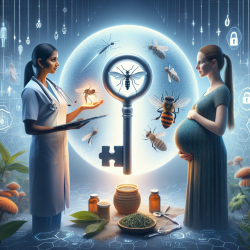Introduction
The concept of nubility, often associated with high reproductive value, has been explored extensively in evolutionary psychology. The recent research article titled Does Nubility Indicate More Than High Reproductive Value? Nubile Primiparas’ Pregnancy Outcomes in Evolutionary Perspective delves into how nubile primiparas—women in the nubile age group of 16-20 years—have better pregnancy outcomes compared to their older counterparts. This blog post will explore how these findings can inform and improve practices in speech-language pathology, particularly in online therapy services for schools.
Understanding Nubility and Its Implications
Nubility refers to the phase in a woman's life when she is considered most attractive and reproductively valuable. The study highlights that nubile primiparas have a lower risk of complications during labor and delivery and their infants are more likely to survive despite lower birth weights. This research provides a unique perspective on how evolutionary factors influence current reproductive outcomes.
Data-Driven Insights for Practitioners
For speech-language pathologists, understanding the nuances of nubility and its impact on pregnancy outcomes can enhance the way we approach therapy, especially for children born to young mothers. Here are some data-driven insights:
- Developmental Milestones: Children born to nubile mothers may have different developmental trajectories. Understanding these can help tailor therapy sessions to better meet individual needs.
- Risk Factors: Recognizing that younger mothers may face different social and behavioral challenges can inform the support provided to families in therapy settings.
- Early Intervention: With the knowledge that younger mothers have better obstetric outcomes, practitioners can focus on early intervention strategies to maximize developmental outcomes for children.
Encouraging Further Research
The findings of this study underscore the importance of considering evolutionary perspectives in modern therapy practices. Practitioners are encouraged to delve deeper into how these evolutionary insights can be applied to enhance therapeutic outcomes. By integrating these findings into practice, we can better support the developmental needs of children and improve family dynamics.
Conclusion
Incorporating insights from evolutionary psychology, such as those related to nubility, can provide a richer understanding of the factors influencing child development. As practitioners dedicated to creating great outcomes for children, staying informed and integrating data-driven decisions into our practice is crucial. To explore the original research in detail, please follow this link: Does Nubility Indicate More Than High Reproductive Value? Nubile Primiparas’ Pregnancy Outcomes in Evolutionary Perspective.










